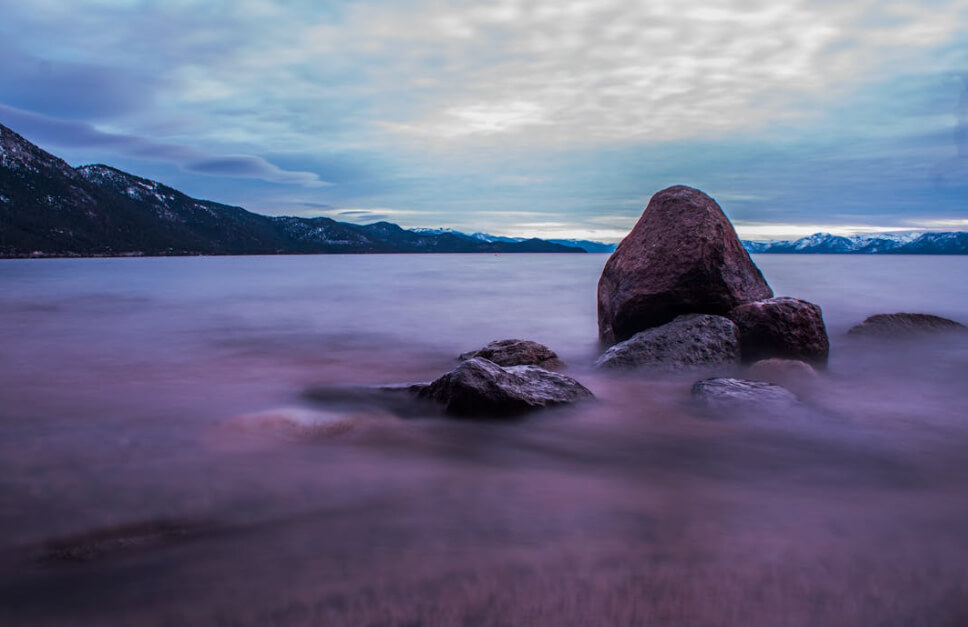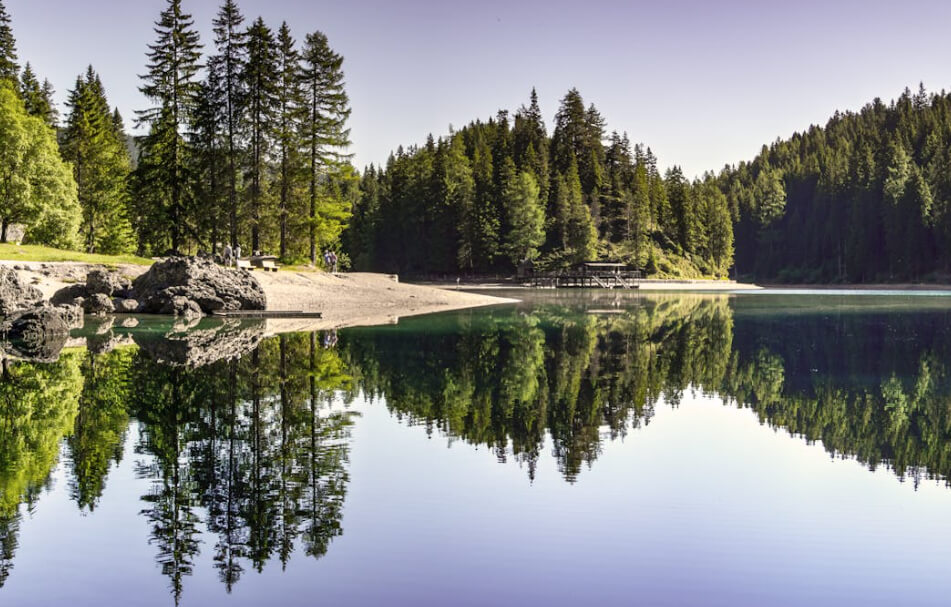The Largest Lakes in California
California is known for its coastlines and vineyards, but there’s far more to the landscape once you move away from the shoreline. Tucked between mountain ranges, stretched across valleys, and scattered throughout quiet basins, the state’s lakes offer a completely different view — one that feels more open, more grounded, and often, more surprising.
There are nearly 3,000 named lakes across California, ranging from massive inland saltwater seas to clear, cold alpine lakes fed by snowmelt. Some are wild and remote, while others are deeply connected to nearby towns and recreation. What stands out most is their variety. No two are quite alike, either in appearance or atmosphere, and each one feels shaped by the land around it.
In this article, I’m focusing on the largest lakes by surface area. This isn’t about the deepest or the most voluminous, but the ones that physically cover the most ground. Some are broad and shallow, others deep and dramatic, but all of them are expansive enough to shape the regions they sit in.
The Biggest Lake in California: Salton Sea

The Salton Sea is California’s largest lake by surface area, stretching across 343,000 acres in the southeastern corner of the state. It lies deep in the desert, isolated and quiet, far from the forests and mountain ranges most people associate with California’s lakes. The water here is shallow, heavily saline, and entirely landlocked — nothing flows out. It simply sits and evaporates under the desert sun.
What makes the Salton Sea even more unusual is how it came to be. In 1905, a failed irrigation canal allowed the Colorado River to escape its course and pour into the Salton Sink, flooding the low-lying basin for nearly two years. When the engineers finally managed to redirect the river, a massive inland lake had already formed. And although it was never meant to last, the lake remained.

Strange Beauty and Ecological Shifts
Since then, the Salton Sea has become saltier every year. With limited inflow and constant evaporation, salinity levels have risen well beyond those of the ocean. As a result, fish populations have crashed, and much of the lake’s former recreational appeal has faded. Still, its role in the larger ecosystem is significant. Millions of migratory birds rely on the area during their journeys, making it an essential stop on the Pacific Flyway.
Despite its decline, the Salton Sea continues to attract attention. Photographers come for the haunting scenery, researchers study its environmental changes, and those drawn to offbeat places find something magnetic about the silence and scale of it. It’s not your typical lake visit, but if you’re after something raw, quiet, and unexpectedly vast, this one leaves an impression.
The Deepest Lake In California: Lake Tahoe

Lake Tahoe covers 122,000 acres, making it the second-largest lake in California by surface area, and easily one of the most iconic. What sets it apart though is not its size, but its setting. Surrounded by the Sierra Nevada mountains and perched at over 6,000 feet of elevation, it holds the title of the largest alpine lake in North America. It’s also the second-deepest lake in the country, plunging down to 1,645 feet in its deepest spot.

The water here is famously clear, with visibility stretching dozens of feet below the surface. That clarity, paired with the surrounding peaks, gives the whole area a sense of calm grandeur. It feels both expansive and tucked away, a rare combination that makes it hard to leave and easy to return to.
Something for Every Season

Tahoe isn’t a one-season wonder. In winter, it draws skiers and snowboarders to its surrounding resorts. Spring and summer shift the focus to boating, paddleboarding, hiking, and swimming in the (very cold) water. Fall tends to be quieter, with crisp air and golden aspens lining the trails. Every part of the year has its own rhythm, and there’s always something to do — if you feel like doing anything at all.
There’s a certain lifestyle built around this lake. It’s part weekend escape, part year-round home for those who want nature just outside their front door. Whether you’re exploring the forested trails or just watching the wind move across the surface, Lake Tahoe has a way of making you pause. Not because it’s loud, but because it’s steady. It doesn’t need to be tried.
The Oldest Lake in California: Clear Lake

Clear Lake is the largest natural freshwater lake entirely within California, covering roughly 43,500 acres. It’s not too deep. It’s also believed to be one of the oldest lakes not only in California, but in North America — about 2.5 million years old. That kind of age doesn’t announce itself loudly, but you can feel it in the stillness, in how the lake sits so comfortably in its basin. It’s been part of this landscape long before roads or fishing tournaments or even people as we know them.
A Hotspot for Anglers and Wildlife
Often called the Bass Capital of the West, Clear Lake is a dream for serious anglers. Largemouth bass are the stars here, and the lake once produced a 17.5-pound record-breaker. But bass aren’t the only draw.

You’ll also find:
- Crappie
- Bluegill
- Catfish
- Carp
It’s not just about fish, either. The surrounding basin is a haven for birds and mammals: herons, egrets, bald eagles, ospreys, deer, and even the occasional mountain lion. Whether you’re on the water or walking the shore, the lake feels alive.
Thinking of visiting Clear Lake? Here is our comprehensive guide of things to do near Clear Lake.
Slow Days, Warm Water

Clear Lake lends itself to a slower kind of trip. There’s plenty of action if you want it — boating, water skiing, jet skiing — but it’s also ideal for doing nothing at all. Sit on a dock, read a book, watch the sunset ripple across the surface. The nearby towns are quiet and relaxed, and even the wine country here feels more laid back than its flashier cousin in Napa.
If you’re planning to stay a few nights, there are plenty of options for Clear Lake accommodations, ranging from cozy lakeside cabins to small motels and vacation rentals. Many places are just steps from the water, making it easy to launch a kayak in the morning or watch the stars from your porch at night. It’s not fancy, but that’s part of the charm.
One Quirky Detail
Unlike most lakes, Clear Lake’s water levels are measured using something called the Rumsey gauge. Instead of feet above sea level, it’s based on a rock sill known as Zero Rumsey. It’s a small local system, but one that shows how long people have been paying attention to this lake’s patterns.
California’s Largest Reservoir: Shasta Lake

Shasta Lake might not be the biggest by surface area, but it plays a massive role in California’s water system. Created by the construction of Shasta Dam on the Sacramento River, this 30,000-acre reservoir is a key part of managing the state’s water supply, irrigation, and hydroelectric power. It’s practical and essential — but also unexpectedly beautiful.
Surrounded by pine-covered hills and distant views of Mount Shasta, the lake manages to feel remote and welcoming at the same time. Even though it’s man-made, the setting doesn’t feel engineered. It feels wild in the right places and well-used in others.
A Floating Kind of Vacation
Shasta is especially popular in the warmer months, when the calm water and warm weather make it ideal for swimming, fishing, and boating. But one thing really sets it apart: houseboats. This is one of the few lakes in the state where houseboating isn’t just possible — it’s a full-on tradition.
People spend days or even weeks out on the water, docking in quiet coves or slowly cruising between inlets. It’s the kind of trip that doesn’t need a tight schedule. You bring your food, your fishing gear, and maybe a few good books, and the lake does the rest.
A Little Extra Adventure
For something different, the Shasta Caverns are just a short boat ride and shuttle trip away. These limestone caves, tucked into the mountains above the lake, are filled with strange formations and underground chambers that feel worlds apart from the water just outside.
Whether you’re coming for the recreation, the scenery, or just to float for a while, Shasta Lake is the kind of place that blends function and beauty in a way only California could pull off.
Other Large California Lakes Worth Mentioning

Not every lake ranks at the very top in size, but several come close and bring their own charm. Whether you’re into unusual geology, quiet retreats, or high-energy boating scenes, there’s something here worth exploring.
- Mono Lake – Salty and ancient, this lake has existed for more than 760,000 years. Its strange limestone formations called tufa towers and its huge population of migratory birds make it feel more like a natural museum than a swimming spot.
- Lake Berryessa – This reservoir sits in the hills north of Napa Valley and is best known for the Glory Hole, a massive spillway that creates a near-perfect whirlpool when the lake is full. It’s a great mix of outdoor recreation and nearby wine country.
- Lake Almanor – Set in the northern Sierra Nevada, Almanor offers wide water views backed by Lassen Peak. It’s peaceful, uncrowded, and a favorite for anyone looking to rent a cabin and take it slow for a few days.
- Eagle Lake – Famous for a unique strain of rainbow trout that thrive in its cold, alkaline waters. The lake is clean, remote, and surrounded by forest, ideal for anyone who prefers a quiet escape with excellent fishing.
- Lake Havasu – Sitting on the border between California and Arizona, Havasu is known for warm water, big boating weekends, and the odd presence of the original London Bridge, brought over piece by piece from England. It’s lively, sunny, and always buzzing with activity.
- Don Pedro Lake – With more than 160 miles of shoreline, this reservoir offers plenty of space for houseboating, fishing, and camping. Its location near Yosemite makes it a solid stop for anyone combining lake time with a national park visit.
Closing Thoughts
For a state known for its coastline, California’s largest lakes offer something quieter and more grounded. They range from alpine retreats to salty desert basins, each shaped by different forces and carrying its own mood. You could spend years exploring them all and still be surprised by what you find.
Clear Lake, in particular, stands out the more you get to know it. It might not have the depth of Tahoe or the strange allure of the Salton Sea, but it has something that feels more lived-in. It’s steady, warm, and full of life. The fishing is excellent, the wildlife is everywhere if you take a moment to look, and the pace is unhurried. It’s a place that doesn’t need flash to leave an impression.
If you prefer fewer crowds and a more laid-back setting, Clear Lake is where you’ll find it. You can spend the morning on the water, the afternoon watching birds from a quiet dock, and the evening sipping wine in a nearby tasting room without ever feeling rushed. It’s the kind of lake that feels like part of a community, not just a destination.
California’s biggest lakes all have something to offer. But Clear Lake, with its long history and everyday charm, might be the one that stays with you longest.
